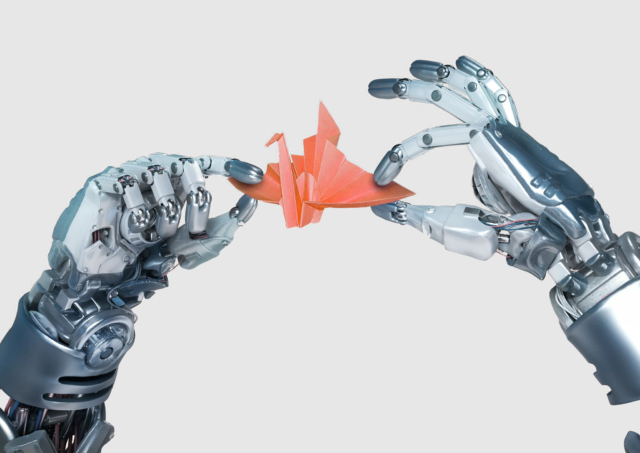HR Processes You Should Automate

May 30, 2025
Last updated on Jun 13, 2025
Your HR team is drowning in paperwork while your competitors win the talent war. Every minute your team spends on manual data entry, scheduling interviews, or processing payroll is a minute not spent on big goals that could change your business. The answer isn't hiring more HR staff—it's implementing HR process automation to unlock your team's potential and drive real business impact.

Key takeaways
- HR process automation cuts time-wasting manual work that drains resources and creates risks, letting your team focus on big goals that drive business growth.
- Automating hiring, onboarding, payroll, and compliance gives quick ROI through fewer errors, faster work, and happier employees.
- Companies that wait on automation in HR management face rising costs from slow processes, compliance risks, and losing good talent to competitors.
- Smart automation changes HR from a cost center into a value creator that strengthens your competitive edge.
Today’s HR teams face a tough challenge: manage complex workforce tasks with limited resources while delivering strategic value to the business. Manual processes that once worked now create bottlenecks, errors, and missed chances that hurt your bottom line. HR workflow automation and smart systems offer a proven path forward, enabling HR teams to eliminate repetitive tasks and refocus on high-value activities that drive competitive advantage.
Automating recruitment and talent acquisition for faster, smarter hiring
The hiring process represents your first impression with top talent—yet most organizations still rely on outdated manual methods that drive candidates away before interviews even begin.
When you automate HR processes in recruitment, you eliminate the chain of problems that add up to big business costs. Manual resume screening alone can eat up 75% of a recruiter’s time, while scheduling conflicts and background check delays stretch out hiring times and make candidates drop out.
Resume screening
Manual resume screening is the biggest bottleneck in hiring. Recruiters spend hours reviewing hundreds of applications for basic qualifications, leaving little time for meaningful candidate conversations. This approach wastes valuable human resources and creates inconsistent evaluation standards.
RPA solutions can automatically scan and evaluate resumes based on set criteria such as:
- Required qualifications and certifications
- Relevant experience levels
- Specific technical skills
- Industry background
The technology ensures only qualified candidates move to human review, cutting screening time by up to 75% while keeping evaluation standards consistent. This efficiency lets recruiters invest their expertise in relationship building and strategic candidate assessment.
Interview coordination
Interview coordination presents another critical challenge that automation directly fixes. The traditional process involves multiple email exchanges, calendar conflicts, and frequent rescheduling that frustrates candidates and delays hiring decisions. Top candidates often accept other offers while waiting for your team to coordinate schedules.
RPA tools work with calendar systems to automatically suggest available time slots, send confirmations, and manage rescheduling requests. This automation eliminates most scheduling conflicts and reduces admin work while creating a more professional candidate experience that enhances your employer brand.
Background verification
Background verification processes often become the final hurdle that delays job offers and risks losing top candidates to competitors. Manual verification requires extensive coordination with external databases and third-party services, creating unpredictable timelines that can stretch for weeks.
RPA can connect directly with employment history databases, educational institutions, and criminal record systems to conduct comprehensive background checks efficiently. This automation ensures due diligence is completed without creating bottlenecks that could derail successful hires.

Streamlining onboarding and offboarding for smooth transitions
A poorly executed onboarding experience can lead to ultimately high turnover rates, while inadequate offboarding creates security vulnerabilities that can expose sensitive data for months.
Manual onboarding and offboarding processes create unnecessary friction at critical moments in the employee lifecycle. These problems can damage employee satisfaction from day one and create security vulnerabilities when employees leave. Understanding what HR processes can be automated in these areas is crucial for maintaining smooth operations.
New hire onboarding automation
New hire onboarding traditionally involves extensive paperwork collection, manual data entry across multiple systems, and delayed access setup. This approach creates admin burden for HR staff while forcing new employees to navigate bureaucratic obstacles before they can contribute productively.
RPA automates the entire onboarding workflow:
- Document distribution: Automatically sends required forms and contracts
- Data collection: Gathers and validates employee information
- System provisioning: Creates accounts across all necessary platforms
- Access rights: Sets up appropriate permissions and security clearances
New hires receive immediate access to necessary tools and resources, enabling faster productivity while reducing manual errors in data entry and account setup. Organizations seeking comprehensive solutions often benefit from HR outsourcing services to handle these complex processes efficiently.
Offboarding security measures
Offboarding presents significant security and compliance risks when handled manually across multiple systems and platforms. Incomplete access removal can leave former employees with ongoing system access, creating data security vulnerabilities and potential compliance violations.
Automated offboarding workflows ensure systematic access removal across all systems, equipment return tracking, and consistent execution of exit procedures. This approach protects sensitive company information while ensuring compliance with security policies and regulatory requirements.
Improving employee data management for accuracy and insight
Accurate employee data drives every major workforce decision, yet most organizations still rely on error-prone manual processes that provide outdated information when leaders need it most.
Employee data management consumes substantial HR resources while creating risks from manual errors and inconsistent information across systems. These problems limit your ability to make data-driven workforce decisions. Companies often discover these gaps during an HR health check assessment.
Automated data entry and synchronization
HR professionals frequently spend significant time manually entering and updating employee information across different systems, creating opportunities for errors and inconsistencies. This repetitive work prevents HR staff from engaging in strategic analysis and planning activities.
RPA automates data entry and synchronization processes, ensuring information accuracy and consistency across all HR systems. The technology maintains real-time data integrity by:
- Updating employee records across multiple platforms simultaneously
- Validating data entry for accuracy and completeness
- Flagging inconsistencies for human review
- Maintaining audit trails for compliance purposes
This automation frees HR professionals to focus on workforce analytics and strategic planning that drives business value. Modern integrated HR systems further enhance these capabilities by connecting all data sources seamlessly.
Real-time workforce reporting
Manual report generation for workforce metrics often results in delayed or incomplete information that limits leadership decision-making capabilities. Traditional processes require time-consuming data collection and compilation that may not reflect current workforce dynamics.
Automated reporting systems continuously collect and analyze HR data to generate real-time insights on turnover rates, headcount trends, and performance metrics. Leaders receive timely, accurate information that enables proactive workforce planning and strategic decision-making.

Optimizing payroll and benefits for accuracy and trust
Each payroll error cost the average organization $291 in penalties and corrections, while benefits administration mistakes can trigger costly compliance audits and employee lawsuits.
Among HR processes that can be automated, payroll and benefits administration represent high-stakes processes where errors directly impact employee satisfaction and regulatory compliance. Manual processes create unnecessary risks and problems that can damage employee trust and result in costly penalties.
Payroll calculation automation
Complex payroll calculations involving deductions, bonuses, overtime, and tax withholdings create multiple opportunities for costly errors when performed manually. A single calculation mistake can result in incorrect compensation that damages employee confidence and creates compliance issues.
RPA handles these complex computations with precision, ensuring accurate compensation while maintaining compliance with tax regulations and labor laws. Organizations can also benefit from simplify year-end payroll processing to ensure smooth operations during critical periods.
Time tracking integration
Manual integration between time-tracking systems and payroll processing creates problems and introduces errors in compensation calculations. Traditional processes require HR staff to manually transfer timesheet data, creating opportunities for mistakes in hours worked and leave balance calculations.
RPA seamlessly integrates with time-tracking systems to automatically calculate worked hours, overtime, and leave balances. This integration eliminates manual data entry errors while ensuring accurate compensation based on actual time worked.
Strengthening compliance and reporting through automation
Regulatory compliance failures cost organizations an average of $14.8 million annually, with HR violations representing a significant portion of these penalties due to manual oversight gaps.
Regulatory compliance and reporting requirements consume significant HR resources while creating risks from manual errors or missed deadlines. These challenges become more complex as your organization grows and faces increasing regulatory scrutiny.
Continuous compliance monitoring
Manual HR data audits for compliance verification are time-intensive and may miss critical issues until they become costly problems. Traditional audit processes rely on periodic manual reviews that may not identify discrepancies promptly.
RPA performs continuous, systematic audits of HR data to identify potential compliance issues immediately. This proactive approach reduces the risk of regulatory violations and associated penalties while ensuring consistent adherence to internal policies and external regulations.
Automated regulatory reporting
Regulatory reporting preparation often involves repetitive data compilation and formatting that consumes valuable HR resources. Manual preparation increases the risk of errors or missed deadlines that could result in penalties or regulatory scrutiny.
Automated reporting systems collect necessary data, format reports according to regulatory requirements, and submit documentation on schedule. This automation reduces the administrative burden on HR staff while minimizing compliance risks associated with manual reporting processes.
The question facing today’s business leaders isn’t whether to implement HR process automation, but how quickly you can deploy these solutions to gain competitive advantage. Manual HR operations drain resources, create operational risks, and prevent your team from contributing to strategic business objectives.
By automating core HR functions, you transform your human resources department from a cost center into a strategic business partner that drives measurable value. Consider partnering with HR consulting experts to evaluate your most time-intensive processes and begin exploring automation solutions that will make your organization more efficient, compliant, and competitive. The future belongs to organizations that embrace intelligent automation today.

Solve your HR problems!
6th Floor, Star Building, 33 Mac Dinh Chi, Saigon Ward, Ho Chi Minh city, Vietnam




